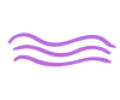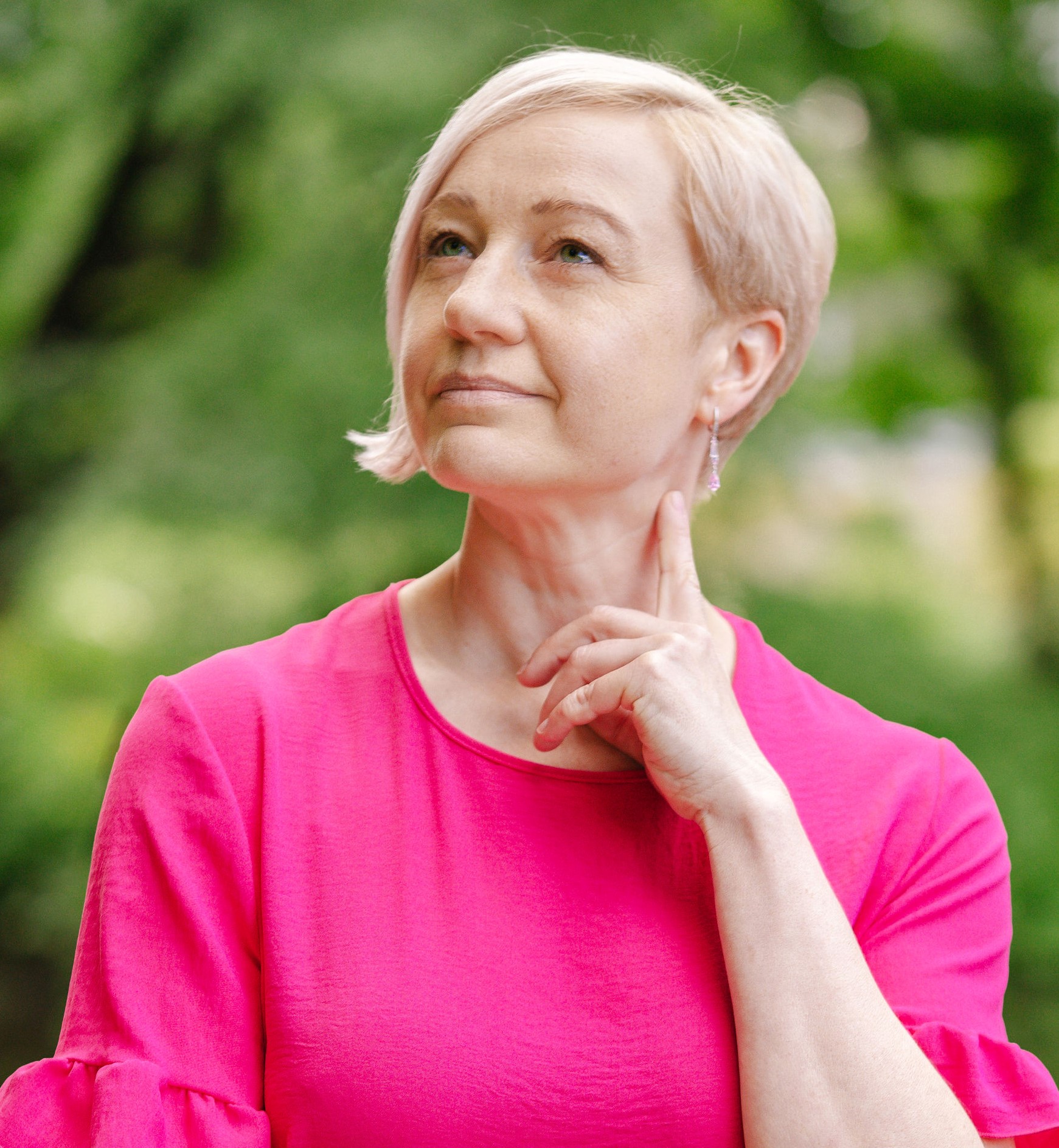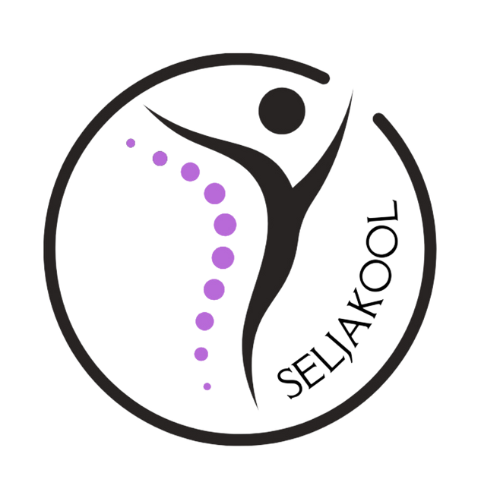
Minu selja lugu

Many years of living with back pain and finally overcoming it has given me more than it took. Now, it’s time to pass that on. The idea of Spine School has been with me for quite a while before I dared to take the decisive step and actually work on it. Before (and sometimes still now), imposter syndrome and shyness would arise, along with fear of a big challenge and public attention. But when the desire is greater than the fear, there’s no choice.
People have limitless potential to help themselves, but unfortunately, they often don’t believe it. The main task of Spine School is to nourish the belief that getting rid of back pain IS possible. And that is the only purpose of sharing my own story here.
It often happens that life teaches us and shows us the way. We just need to be able to see it and follow the guided path. My story will surely resonate with some readers, and hopefully, it will inspire belief that anything is possible.
I don't even remember exactly when my back problems started. It was a long time ago when I was a student. Yes, a young person with a painful back! Initially, the pain was only occasional, bothering me for a period and then easing off. I would forget about it until the next flare-up and didn't make a big deal out of it. Other family members have also had back issues (who hasn't!?) and I probably thought it was normal (hereditary?). The real problem started during my first pregnancy and afterward. In nine months, I gained almost half my body weight, and that was definitely one of the many reasons that contributed to the onset of back pain. The pain began to radiate from my lower back, sometimes into my leg. It would alternate between sides, appearing and disappearing unpredictably. Over the next four years, I became a mother of three, and understandably, this added more lifting, bending, and unnatural postures to my daily routine, with progressively less time to recover. While I managed to shed most of the weight gained during pregnancy, ten extra kilos remained as a reminder of that special time.
I have always been athletic. I actually need it. I almost never had to force myself to go to the gym, and I certainly never regretted any workout. After having children, I gradually started exercising again—I went running, played badminton, and tennis. Badminton was the first activity I had to give up. I completed my workout, came home, sat on the sofa to read or watch TV. But then, I couldn't get up from the sofa anymore. Well, I could get up, but with a lot of pain. By the next day, the severe pain had subsided, and everything was more or less okay (except for the stiffness in my lower back), but those evenings were torture. I often needed painkillers just to be able to fall asleep. My sleep was also disturbed: turning from side to side in bed was so painful that I had to wake up to do it. Clearly, frequent awakenings don't ensure quality sleep, and although it may have seemed like I got enough sleep, I was far from being rested.
After a while, I gave up running as well, because it followed the same frustrating pattern. But I could still do brisk walking! Problem solved...
Tennis has always been my greatest passion. I started as a child, hitting a ball against the house wall with a wooden racket, watching the Wimbledon tennis tournament on Finnish television. It wasn't until university that I started playing for real, and I've been playing ever since. After I had to stop playing badminton and running due to back pain, I soon realized that my back couldn't handle tennis anymore either. By the end of just an hour-long training session, I had to support my free hand on my knee to make low and net-bound shots because my back pain wouldn’t allow me to swing the racket properly. This was clearly the breaking point.
While it’s not appropriate to rejoice over others' troubles, by that time, several of my friends had started complaining about back pain. That’s when the idea of forming a training group as a team and exploring the wonderful world of Pilates came to life. Our amazing colleague, physiotherapist and trainer Margit, became the instructor. We’ve been training together every week for the last 10 years. I could write a book about how, in the beginning, I felt nauseous and dizzy after the workouts. But that didn’t stop us from pushing forward for the good cause, and it has definitely been worth it.
Knowing that high-impact sports involving jumping and running aren’t the best for the back, and with age steadily adding more years, I decided to take up swimming. Actually, I knew how to swim before, but not “properly.” I would always swim with my head above water, or on my back. However, this “style” is more harmful to the back than beneficial. I enrolled in adult swimming lessons, went through three cycles, and can now confidently say I’ve mastered the basics of swimming. That was about four years ago. I’ve been trying to swim once a week ever since. And I can boldly say that swimming has ultimately saved my back.
My journey to becoming free from back pain was not conscious or goal-oriented. I probably didn't even believe that the back pain would disappear. Looking back on it now feels strange. However, I did find my way out, discovering and experiencing it for myself. Likely, my progressively improving health kept me on track. Or was it sheer willpower?
It was only later that I started to explore more about chronic pain and psychology. I discovered the world of personal development, different methodologies, explanations, and theories, which further proved to me why I am where I am today. If I had known everything I know now at the beginning of my journey, I would have reached the result much faster. I must admit that when studying to become a doctor, the treatment of pain was quite limited and more superficial. The reason for this is probably that the human body is so complex, and studying every element in depth doesn't fit into the six-year university program. Yet, I believe that pain is a central theme in medicine, and I hope that today’s curriculum dedicates more time to it.
In addition to my personal journey, my experience with hundreds of patients suffering from back pain over the years is invaluable. I have learned more from them than from any textbook. The irony is that most patients with chronic back pain shouldn’t even need to see a neurologist because it’s not a neurological issue. Medicine simply struggles to solve this situation, which is both simple and complex at the same time. That’s why it’s understandable why patients end up with a specialist and undergo tests, but not necessarily find solutions. Often, it just isn’t a medical problem.
So why did my back hurt? There were probably many reasons, but the most important ones were: muscle weakness (I did exercise, but didn’t do specific muscle strengthening exercises), stress (mostly low, but constant and almost unnoticeable), excess weight, poor-quality sleep, and too little time for myself.
Spine School was created so that people with chronic back pain don’t have to wander in the dark, unsure where the way out is. Based on my personal and professional experience, I’ve developed tools that help find a solution. As a bonus, you’ll be able to enjoy the results much faster than I did, and my bonus is the knowledge that everything happens for a reason: if my back hadn’t hurt so persistently, I wouldn’t have the opportunity to help others today.

I have been inspired on this journey by many people, not all of whom are doctors or even healthcare professionals. Some I know very closely, while others I’ve gotten to know through books, podcasts, and websites. Let me list a few names. A huge thank you to all of you! Your contribution has been invaluable!
Helina Kalda, Sigrit Säga, Helina Mägi, Pille Mutli, Iren Laidma, Kai Oja, Liina Vettik, Roland Tokko, Margit Rechlin, Kerttu Tänav, Ave Toomjõe, Taavi Metsma, Alan Gordon, Vishen Lakhiani, Bob Proctor, Brook Castillo and so on.
If you are open-minded, ready to invest in yourself, and enjoy the process, then here is your opportunity! See you at Spine School!

